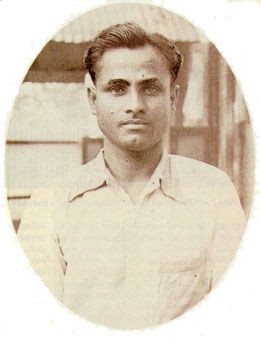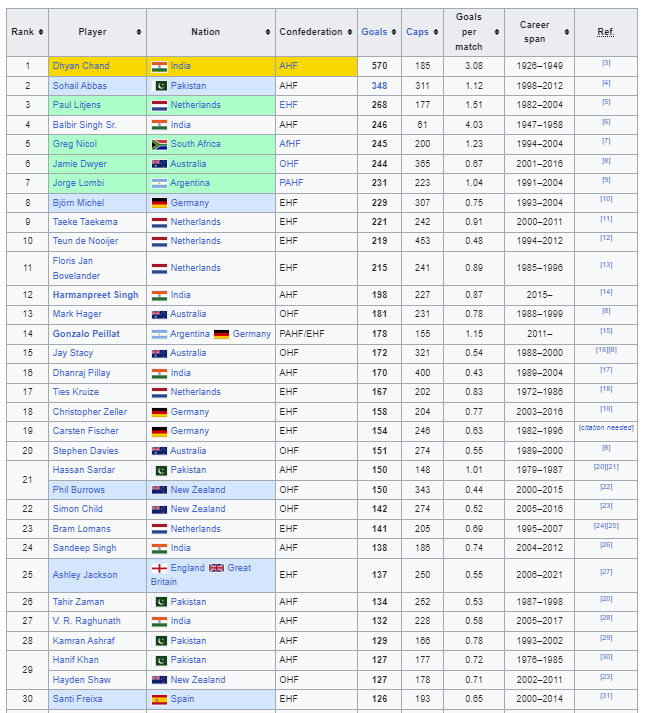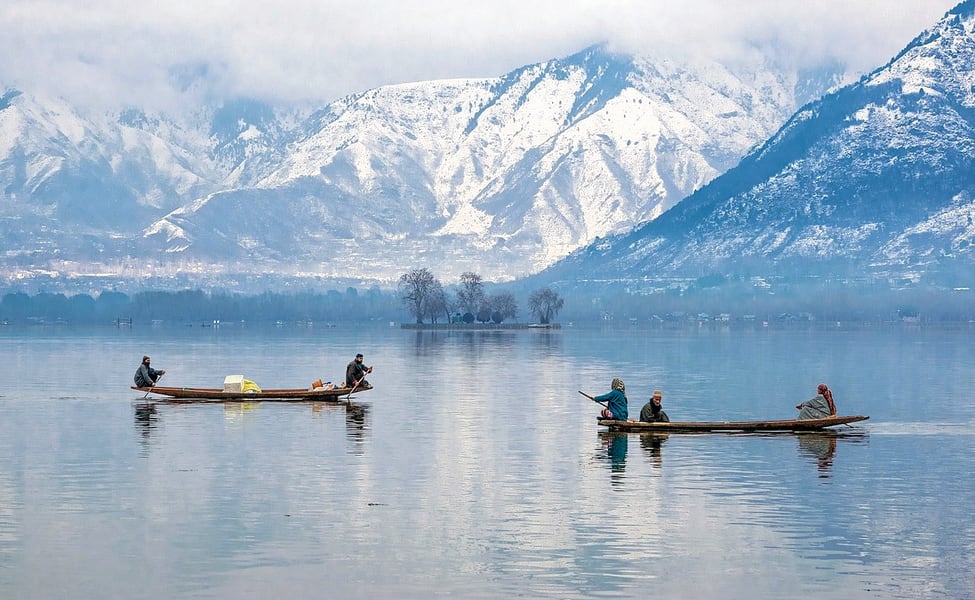
Introduction
Major Dhyan Chand Singh Bais, widely recognized as the “Wizard of Hockey,” is not just a name but a symbol of excellence, dedication, and the pinnacle of sporting achievement in India. Born on August 29, 1905, in Allahabad, British India, Dhyan Chand’s life story is a journey of remarkable talent, relentless determination, and a deep passion for the sport of field hockey. Over his illustrious career, he captivated the world with his extraordinary skills, leading India to multiple Olympic victories and bringing unparalleled glory to the nation. This biography delves into the life of this legendary sportsman, exploring his early years, career, achievements, playing style, and enduring legacy.
Early Life and Background
Dhyan Chand was born to Sameshwar Dutt Singh Bais, soldier in the British Indian Army, and Shyama Singh. His family belonged to the Bais Rajput community, and his father’s profession meant that the family moved frequently, giving young Dhyan Chand exposure to various parts of India. This nomadic lifestyle played a significant role in shaping his adaptability and resilience, traits that would later become evident in his sporting career.
As a child, Dhyan Chand was not particularly inclined toward hockey. His early interest lay more in wrestling, which was a popular sport among the youth of his community. It was not until his teenage years, after his family settled in Jhansi, that he began to take an interest in hockey. The simplicity of the game, which could be played with just a stick and a ball, appealed to him. He would often practice on his own, using makeshift equipment, and his natural talent began to shine through.
Despite his growing interest in hockey, Dhyan Chand did not receive formal training in the sport during his early years. His primary education was sporadic due to the family’s frequent relocations, and he eventually left school after completing his sixth grade. However, this did not deter him from pursuing his passion for hockey. His father’s military background would soon provide the platform for Dhyan Chand to develop his skills and embark on a remarkable journey in the world of sports.
Joining the Army and Early Hockey Career
In 1922, at the age of 17, Dhyan Chand enlisted in the British Indian Army as a sepoy (private), following in his father’s footsteps. It was in the army that his hockey career truly began to take shape. The British Indian Army had a strong tradition of sports, particularly hockey, and it was here that Dhyan Chand received the opportunity to play the game more seriously. His early years in the army were spent in the regiment’s sports unit, where he honed his skills and began to attract attention for his exceptional talent.
Dhyan Chand’s early hockey training was largely self-taught. He would often practice at night after completing his duties, using the moonlight to guide him. This dedication to practicing under the moonlight earned him the nickname “Chand,” which means moon in Hindi. His natural flair for the game, combined with his rigorous practice sessions, led to rapid improvement in his skills. By the mid-1920s, Dhyan Chand had established himself as a promising young player within the army’s hockey circles.
His first major break came in 1926 when he was selected to represent the Indian Army in a series of matches against New Zealand. The team won 18 out of 21 matches, and Dhyan Chand’s performance was nothing short of spectacular. His dribbling skills, ball control, and ability to score from almost any position on the field left both spectators and opponents in awe. This tour marked the beginning of Dhyan Chand’s journey to becoming a national and international hockey icon.
The 1928 Amsterdam Olympics and International Fame
Dhyan Chand’s rise to international fame began with the 1928 Amsterdam Olympics, where India was making its debut in field hockey. The Indian team, largely composed of players from the British Indian Army, was relatively unknown on the global stage. However, they were determined to make a mark, and Dhyan Chand was at the forefront of this mission.
The Indian team’s performance in the tournament was nothing short of extraordinary. They went undefeated throughout the competition, scoring a total of 29 goals and conceding none. Dhyan Chand emerged as the star of the tournament, scoring 14 of those goals, including two in the final against the Netherlands, which India won 3-0. His impeccable ball control, speed, and ability to outmaneuver defenders earned him widespread acclaim. The international media began referring to him as the “Wizard of Hockey,” a title that would stick with him for the rest of his life.
The 1928 Olympics marked the beginning of India’s dominance in international hockey, a period that would last for several decades. For Dhyan Chand, it was the start of a legendary career that would see him become one of the most celebrated athletes in the world.
The 1932 Los Angeles Olympics: The Golden Duo
Following the success of the 1928 Olympics, Dhyan Chand’s stature in the world of hockey continued to grow. By the time the 1932 Los Angeles Olympics came around, he was widely regarded as the best hockey player in the world. The Indian team, now seen as the favorites, was under immense pressure to defend their title.
The 1932 Indian hockey team featured another key player, Dhyan Chand’s younger brother, Roop Singh Bais. Together, the Chand brothers formed a formidable duo that would lead India to one of its most dominant performances in Olympic history. The team faced only two opponents in the tournament: Japan and the United States. India won both matches with an astounding goal difference, defeating Japan 11-1 and the United States 24-1. This victory over the United States remains one of the most lopsided matches in Olympic history.
Dhyan Chand’s performance in the final against the United States was particularly memorable. He scored eight goals, while his brother Roop Singh scored ten. The duo’s incredible coordination and understanding on the field were key to India’s overwhelming success. The international media was once again in awe of Dhyan Chand’s skills, with one newspaper famously describing the Indian team as “eleven Dhyan Chands.”
The 1936 Berlin Olympics: The Pinnacle of Glory
The 1936 Berlin Olympics is perhaps the most celebrated chapter in Dhyan Chand’s illustrious career. The tournament was held in Nazi Germany, under the watchful eye of Adolf Hitler, who saw the Olympics as an opportunity to showcase the superiority of the Aryan race. India, by this time, had already established itself as a hockey powerhouse, having won gold in the previous two Olympics. However, the 1936 Olympics presented a unique challenge, as the host nation, Germany, was determined to break India’s dominance.
The Indian team, led by Dhyan Chand, was once again the favorite to win the gold medal. However, they faced stiff competition from Germany, who had assembled a strong team and were determined to win in front of their home crowd. The final match between India and Germany was held on August 15, 1936, in front of a packed stadium that included Adolf Hitler.
The atmosphere in the stadium was tense, with the German crowd vocally supporting their team. However, the Indian team, led by the calm and composed Dhyan Chand, remained unfazed. In one of the most memorable performances in Olympic history, India defeated Germany 8-1, with Dhyan Chand scoring three goals. His performance was so mesmerizing that the German defenders were left bewildered, unable to stop his relentless attacks.
According to popular lore, Hitler was so impressed by Dhyan Chand’s performance that he offered him a senior position in the German army, which Dhyan Chand politely declined. This incident, though possibly apocryphal, has become a part of the Dhyan Chand legend, highlighting the respect and admiration he commanded from all quarters.
The 1936 Berlin Olympics was the pinnacle of Dhyan Chand’s career. He had led India to three consecutive Olympic gold medals, firmly establishing the country’s dominance in the sport. His extraordinary skills, sportsmanship, and humility made him a global icon, earning him the admiration of fans and players alike.
Playing Style and Skills
Dhyan Chand’s playing style was characterized by his extraordinary ball control, dribbling skills, and an uncanny ability to anticipate the moves of his opponents. He was known for his calm and composed demeanor on the field, which allowed him to remain focused even in the most high-pressure situations. His ability to maneuver the ball with precision and speed earned him the title “Wizard of Hockey,” as it often seemed like the ball was glued to his stick.
One of Dhyan Chand’s most remarkable skills was his dribbling. He had an exceptional ability to weave through defenders, often leaving them flat-footed and helpless. His dribbling was so precise that he could change direction at a moment’s notice without losing control of the ball. This made him a constant threat to opposing defenses, as he could create scoring opportunities out of seemingly impossible situations.
In addition to his dribbling, Dhyan Chand was also known for his powerful and accurate shots. He had a keen eye for goal and could score from almost any position on the field. His ability to find the back of the net, even from difficult angles, made him one of the most prolific goal-scorers in the history of the sport.
Dhyan Chand’s playing style was also characterized by his unselfishness and teamwork. Despite being the star of the team, he was always willing to pass the ball to a teammate in a better position. He believed in playing for the team rather than individual glory, a quality that endeared him to his teammates and coaches.
Life Beyond Hockey

After the 1936 Berlin Olympics, Dhyan Chand continued to play hockey at the national and international levels, although his appearances on the international stage became less frequent. He remained a key player for the Indian team until his retirement from international hockey in 1948. Over his career, Dhyan Chand scored more than 550 goals in international matches, a record that remains unmatched.
In addition to his international achievements, Dhyan Chand also had a successful domestic career, playing for the Indian Army and various clubs. He won numerous national championships and was widely regarded as the best player in the country.
After retiring from competitive hockey, Dhyan Chand continued to serve in the Indian Army, eventually rising to the rank of Major. His contributions to the sport and the nation were recognized by the Indian government, which awarded him the Padma Bhushan, India’s third-highest civilian honor, in 1956. This was a fitting tribute to a man who had dedicated his life to the sport and brought so much glory to the country.
Dhyan Chand also took on the role of a coach and mentor, passing on his knowledge and experience to the next generation of hockey players. He was appointed as the Chief Hockey Coach at the National Institute of Sports in Patiala, where he trained and nurtured young talent. His commitment to developing the sport in India continued long after his playing days were over, and he remained a revered figure in Indian hockey circles.
Challenges and Controversies
Despite his immense contributions to the sport, Dhyan Chand faced several challenges and controversies during his lifetime. One of the most significant challenges was the lack of recognition and financial support for athletes in India during his era. Unlike today’s sports stars, Dhyan Chand and his contemporaries did not receive lucrative endorsements or sponsorships. As a result, many of them, including Dhyan Chand, lived modest lives despite their international fame.
In his later years, Dhyan Chand faced financial difficulties, and his health began to deteriorate. Despite his status as a national hero, he did not receive the kind of support that one might expect for a sportsman of his stature. This lack of recognition and support has been a point of criticism, with many arguing that India did not do enough to honor one of its greatest sporting icons during his lifetime.
Another controversy that emerged after Dhyan Chand’s retirement was the alleged neglect by the Indian sports establishment. Despite his contributions to Indian hockey, Dhyan Chand was not given a prominent role in the administration of the sport. Some believe that this was due to the politics and favoritism that plagued Indian sports at the time.
Legacy and Honors
Despite the challenges he faced, Dhyan Chand’s legacy as the greatest field hockey player of all time remains intact. His name is synonymous with excellence in the sport, and he continues to be an inspiration to hockey players and sports enthusiasts around the world.
Dhyan Chand’s contributions to Indian hockey were officially recognized by the Government of India when they instituted the Dhyan Chand Award in 2002. This award is the highest lifetime achievement award in sports and games in India, given to individuals who have made significant contributions to sports during their careers. The award serves as a fitting tribute to Dhyan Chand’s enduring legacy and his impact on Indian sports.
In addition to the Dhyan Chand Award, several other honors have been bestowed upon him posthumously. The Indian government has named numerous sports facilities and stadiums after him, including the Major Dhyan Chand National Stadium in New Delhi, which serves as a central venue for field hockey in the country. His birthday, August 29, is celebrated as National Sports Day in India, a day dedicated to honoring sports achievements and promoting sports culture in the country.
Dhyan Chand’s life and career have also been the subject of several books, documentaries, and films. His autobiography, Goal, published in 1952, provides a firsthand account of his journey and the challenges he faced as an athlete in pre-independent India. The book remains a valuable resource for anyone interested in the history of Indian sports and the life of one of its greatest icons.
Influence on Future Generations
Dhyan Chand’s influence on future generations of hockey players cannot be overstated. His playing style, dedication, and sportsmanship set the standard for what it means to be a great hockey player. Many of India’s subsequent hockey stars, including Balbir Singh Sr., Mohammed Shahid, and Dhanraj Pillay, have cited Dhyan Chand as a major influence on their careers.
Dhyan Chand’s legacy also extends beyond the sport of hockey. His story is often cited as an example of how talent, hard work, and determination can lead to success, even in the face of adversity. He is seen as a role model not just for athletes, but for anyone striving to achieve excellence in their chosen field.
Conclusion
Major Dhyan Chand Singh’s life is a testament to the power of talent, dedication, and an unwavering love for one’s craft. From his humble beginnings in Allahabad to becoming the “Wizard of Hockey,” Dhyan Chand’s journey is one of the most inspiring stories in the history of sports. His achievements on the field brought unparalleled glory to India and established the country as a dominant force in international hockey. Despite the challenges he faced, both during and after his career, Dhyan Chand remained a humble and dedicated servant of the sport.
Today, more than four decades after his passing, Dhyan Chand’s legacy continues to inspire and motivate generations of athletes around the world. His name is synonymous with excellence, and his contributions to Indian hockey will never be forgotten. In the annals of sports history, Major Dhyan Chand Singh’s name will forever be etched in gold, a true legend of the game and a national treasure for India.




